Agorà
permanent sound installation
OPENArchival Platform
LWCircus
This content is avaiable only in this archive.

Regista e antropologo
Felipe Ferraz is a director, producer and anthropologist. He is co-founder of Wamãe I Antropologia Pública, an association dedicated to public and visual anthropology. He is a researcher at CRIA, Centro em Rede de Investigação em Antropologia, and invited professor of cinema in IPS-Instituto Politécnico de Setúbal. His latest vídeo works deal with questions concerning inequality, postcolonialism and disability.
Felipe Ferraz is a director, producer and anthropologist. He is co-founder of Wamãe I Antropologia Pública, an association dedicated to public and visual anthropology. He is a researcher at CRIA, Centro em Rede de Investigação em Antropologia, and invited professor of cinema in IPS-Instituto Politécnico de Setúbal. His latest vídeo works deal with questions concerning inequality, postcolonialism and disability.
This content is avaiable only in this archive.

Architect
Duarte Santo is an Architect, Landscape and Urban Designer, Educator and Researcher, currently at Cornell University. His research, practice and teaching, operating across art, architecture, landscape and tourism, focuses on intersectional ecologies and design, material flows and islandologies, explored through experimentation and discourse addressing the sensorial and intersubjective natures of space.
Duarte Santo is an Architect, Landscape and Urban Designer, Educator and Researcher, currently at Cornell University. His research, practice and teaching, operating across art, architecture, landscape and tourism, focuses on intersectional ecologies and design, material flows and islandologies, explored through experimentation and discourse addressing the sensorial and intersubjective natures of space.
This content is avaiable only in this archive.
in collaborazione con LWCircus e con il padiglione Italia, XVII Biennale di Architettura di Venezia
Progetto RIVA
Continuano gli appuntamenti del Progetto RIVA, all’interno del progetto interregionale Neptune, in collaborazione con il padiglione Italia, XVII Biennale di Architettura di Venezia e LWCircus, grazie a quattro giorni di attività di informazione e comunicazione sui paesaggi e sulle comunità resilienti, in cui esporremo le iniziative e i risultati raggiunti grazie all’impegno pluriennale del Progetto RIVA.
Mercoledì 29 e giovedì 30 settembre, a partire dalle ore 18.00, trasmetteremo in diretta sulla nostra pagina di Facebook ASINARA LAB 2021 – CONVIVUM – “Asinara Arte e Natura, i paesaggi resilienti e il turismo sostenibile”, per parlare di ecosostenibilità e per promuovere un turismo responsabile nel Mediterraneo.
La partecipazione è gratuita e non necessita di invito.
È possibile vedere la registrazione degli eventi ai seguenti link:
https://www.facebook.com/murateartdistrict/posts/1958386580996944 (29 settembre 2021)
https://www.facebook.c
Continuano gli appuntamenti del Progetto RIVA, all’interno del progetto interregionale Neptune, in collaborazione con il padiglione Italia, XVII Biennale di Architettura di Venezia e LWCircus, grazie a quattro giorni di attività di informazione e comunicazione sui paesaggi e sulle comunità resilienti, in cui esporremo le iniziative e i risultati raggiunti grazie all’impegno pluriennale del Progetto RIVA.
Mercoledì 29 e giovedì 30 settembre, a partire dalle ore 18.00, trasmetteremo in diretta sulla nostra pagina di Facebook ASINARA LAB 2021 – CONVIVUM – “Asinara Arte e Natura, i paesaggi resilienti e il turismo sostenibile”, per parlare di ecosostenibilità e per promuovere un turismo responsabile nel Mediterraneo.
La partecipazione è gratuita e non necessita di invito.
È possibile vedere la registrazione degli eventi ai seguenti link:
https://www.facebook.com/murateartdistrict/posts/1958386580996944 (29 settembre 2021)
https://www.facebook.com/murateartdistrict/posts/1959059214263014 (30 settembre 2021)
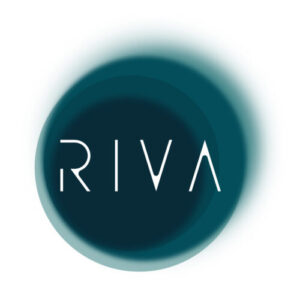
This content is avaiable only in this archive.
Progetto RIVA 2021
Available in:
RIVA Project 2021
Living Lab (2021), designed by LWCircus and created by Giacomo Salizzoni, is an ecological corridor made of jasmine plants (Rincospermum), enriched by a peripatetic bed of aromatic herbs typical of the Tuscan landscape, which enhance the loggia of MAD, paving the way to a polyfunctional space for lectures and workshops addressed to locals. The installation, which will be further enriched and developed for the duration of the exhibit, aims to underline the possible coexistence of urban and natural landscapes, which blend into a single environment capable of generating ecological awareness and culture thanks to inclusive workshops and encounters with artists, designers, landscape architects, scientists, architects.
In collaboration with the 17th Venice International Architecture Exhibition.
Living Lab (2021), designed by LWCircus and created by Giacomo Salizzoni, is an ecological corridor made of jasmine plants (Rincospermum), enriched by a peripatetic bed of aromatic herbs typical of the Tuscan landscape, which enhance the loggia of MAD, paving the way to a polyfunctional space for lectures and workshops addressed to locals. The installation, which will be further enriched and developed for the duration of the exhibit, aims to underline the possible coexistence of urban and natural landscapes, which blend into a single environment capable of generating ecological awareness and culture thanks to inclusive workshops and encounters with artists, designers, landscape architects, scientists, architects.
In collaboration with the 17th Venice International Architecture Exhibition.
This content is avaiable only in this archive.
Promoted by the MUS.E Association under the artistic direction of Valentina Gensini
In 2018, the RIVA Project resumed its collaboration with Pelago and Montelupo Fiorentino, involving both the historic centre and the outskirts of Florence. Its action paid special attention to environmental issues, as well as the economic, political, and social context. One of the principal events was Paolo Masi’s solo show QUI with a display of twelve new site-specific artworks produced during his six-month residency at MAD Murate Art District. Montelupo Fiorentino was the centre of activity for Yuval Avital and the ConFusion migrant choir directed by Benedetta Manfriani, for Tempo Reale and its Sentieri del silenzio (Paths of Silence) project carried out at the former psychiatric hospital, and for Radio Papesse with Storie dell’Arno a Montelupo (Histories of the Arno in Montelupo). The other town crossed by the Arno, Pelago, hosted photographer Davide Virdis (who presented an exhibit in a public space and held a workshop in collaboration with Fondazione Studio Marangoni) and Stud
In 2018, the RIVA Project resumed its collaboration with Pelago and Montelupo Fiorentino, involving both the historic centre and the outskirts of Florence. Its action paid special attention to environmental issues, as well as the economic, political, and social context. One of the principal events was Paolo Masi’s solo show QUI with a display of twelve new site-specific artworks produced during his six-month residency at MAD Murate Art District. Montelupo Fiorentino was the centre of activity for Yuval Avital and the ConFusion migrant choir directed by Benedetta Manfriani, for Tempo Reale and its Sentieri del silenzio (Paths of Silence) project carried out at the former psychiatric hospital, and for Radio Papesse with Storie dell’Arno a Montelupo (Histories of the Arno in Montelupo). The other town crossed by the Arno, Pelago, hosted photographer Davide Virdis (who presented an exhibit in a public space and held a workshop in collaboration with Fondazione Studio Marangoni) and Studio ++ collective art group.
The Murate Art District was the venue for lectures and Italian and English classes held by LWCircus and the Department of Architecture from the University of Florence. The 2018 edition of the RIVA Project opened to the Far East thanks to a partnership with Zhong Art International, and offered a residency at MAD to three Chinese artists, who were invited to provide their specific vision of the Arno River.
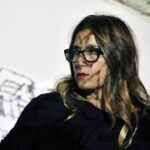
Architect and Co-Founder and Scientific Coordinator of LWCircus
Architect | Phd in Development, Restoration and Design. Architect and PhD ICAR 19 Development, Restoration and Design in Archeological and Ambient areas gained in University of Rome La Sapienza. She has coordinated several contemporary art installations in Rome – Sant’Alessio Historical Garden with Fondazione Roma arte e Musei. She has designed Nora’s Archeological park in Sardinia and several public works in Rome, Bari, Cagliari. She is Co-Founder and Scientific Coordinator of LWCircus, the Italian – Mexican Operative Shared Program born in the 2016 and focused on experimental modalities in searching new strategies for sustainable urban and rural development on sensitive natural areas and the revitalization of cultural landscapes inside Mediterranean and the developing Countries.
Architect | Phd in Development, Restoration and Design. Architect and PhD ICAR 19 Development, Restoration and Design in Archeological and Ambient areas gained in University of Rome La Sapienza. She has coordinated several contemporary art installations in Rome – Sant’Alessio Historical Garden with Fondazione Roma arte e Musei. She has designed Nora’s Archeological park in Sardinia and several public works in Rome, Bari, Cagliari. She is Co-Founder and Scientific Coordinator of LWCircus, the Italian – Mexican Operative Shared Program born in the 2016 and focused on experimental modalities in searching new strategies for sustainable urban and rural development on sensitive natural areas and the revitalization of cultural landscapes inside Mediterranean and the developing Countries.
This content is avaiable only in this archive.
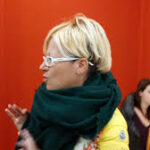
Architect and Co-Founder and Scientific Coordinator of LWCircus
Annacaterina Piras is architect and cartographer and has a PhD in Landscape Architecture gained at the Alghero School of Architecture, University of Sassari (2011). She obtained the first degree in Architecture at the Florence School of Architecture (1999). Since 2004 she has coordinated several international operative workshops, experimenting shared practices in urban interventions trough the art medium as a vehicle for the redevelopment of open spaces, with the collaboration of local artists, communities and cultural foundations, as Museo Nivola, Orani (2004) and Fondazione Stazione dell’arte, Ulassai (2006). During last years she collaborated with different Universities, Foundations and Cultural Institutions, such as the Cornell University in Rome (2009), the Master in Landscape Architecture of Barcelona at ETSAB_UPC (2010), the Bauhaus Dessau Foundation (2011), the RMIT University, School of Architecture and Design, Melbourne (2013-19), the ENSP, Ecole nationale supérieure du Pa
Annacaterina Piras is architect and cartographer and has a PhD in Landscape Architecture gained at the Alghero School of Architecture, University of Sassari (2011). She obtained the first degree in Architecture at the Florence School of Architecture (1999). Since 2004 she has coordinated several international operative workshops, experimenting shared practices in urban interventions trough the art medium as a vehicle for the redevelopment of open spaces, with the collaboration of local artists, communities and cultural foundations, as Museo Nivola, Orani (2004) and Fondazione Stazione dell’arte, Ulassai (2006). During last years she collaborated with different Universities, Foundations and Cultural Institutions, such as the Cornell University in Rome (2009), the Master in Landscape Architecture of Barcelona at ETSAB_UPC (2010), the Bauhaus Dessau Foundation (2011), the RMIT University, School of Architecture and Design, Melbourne (2013-19), the ENSP, Ecole nationale supérieure du Paysage, Versailles (2013-14-15-16), the Universidad Marista, Merida (2016), the Chinese Universities of SCUA, SCUT, GAFA in Guangzhou and PKU, Beijing (2017), the UHM, University of Hawaii at Manoa (2017), Tonji and Jiao Tong University in Shanghai (2018), TURENSCAPE Academy (from 2018). From 2009, She coordinated several workshops for the II Level Master in Mediterranean Landscape Urbanism, at the Alghero School of Architecture, University of Sassari, where she worked as Academic Coordinator for the second edition of the Master MMLU (2014-2015). She has been Co-Founder and scientific coordinator for the first six editions (2011-2016) of LandWorks-Sardinia. She is Co-Founder and Scientific Coordinator of LWCircus, the Italian – Mexican Operative Shared Program born in the 2016 and focused on experimental modalities in searching new strategies for sustainable urban and rural development on sensitive natural areas and the revitalization of cultural landscapes inside Mediterranean and the developing Countries. She has been juror at the World Landscape Architecture Award 2019 and has been nominated for the American Academy in Rome Italian Fellowships 2019-2020.

Italian – Mexican Operative Shared Program
LWCircus is the Italian – Mexican Operative Shared Program born in the 2016, following to a critical rereading of the guide lines delineated along the pluriannual experience of coordination inside of successful international operative programs and looking for a systematization of alternative methodologies based on social practices and an improvement of tools and devices, able to give life to long term process in term of sustainable development and responsible valorization. The Program focuses specifically on experimental modalities in searching new strategies for sustainable urban and rural development on sensitive natural areas and territories under transition (anthropologic, socio-economic and environmental aspects), together with a responsible valorization of cultural landscapes inside Mediterranean and the developing Countries.
LWCircus is the Italian – Mexican Operative Shared Program born in the 2016, following to a critical rereading of the guide lines delineated along the pluriannual experience of coordination inside of successful international operative programs and looking for a systematization of alternative methodologies based on social practices and an improvement of tools and devices, able to give life to long term process in term of sustainable development and responsible valorization. The Program focuses specifically on experimental modalities in searching new strategies for sustainable urban and rural development on sensitive natural areas and territories under transition (anthropologic, socio-economic and environmental aspects), together with a responsible valorization of cultural landscapes inside Mediterranean and the developing Countries.

Visual artist
He lives and works in Yamagata, Japan. He graduated at the Tokyo University of the Arts, (formerly, Tokyo National University of Fine Arts and Music), where He received M.F.A. of Inter Media Art course in 2008, Japan. In 2009 He Joined Niigata Water and Land Art Festival 2009 Niigata, Japan, selected by Fram KITAGAWA.
Also “No man’ s land” Ambassade de France au Japan, Tokyo, Japan in 2009-2010, directed by the Franch embassy. After Joined Tokyo Midtown Award 2010, Tokyo Midtown, Tokyo, Japan in 2010, He received a grant Shou Foundation (private) from Okayama Japan. With the grant traveled around Asia to study the source of own my culture, especially Animism, Shinto-ism and Buddhism for a year, 2013. Back to Japan and Founded a studio and an art production corporation, in Yamagata in 2014.
Awards and Grants are Second place for Graduated Exhibition Tokyo University of the Arts 2008, Tokyo Midtown Award 2010, Shou foundation 2011, International Photography award 2012,PX3, etc. In
He lives and works in Yamagata, Japan. He graduated at the Tokyo University of the Arts, (formerly, Tokyo National University of Fine Arts and Music), where He received M.F.A. of Inter Media Art course in 2008, Japan. In 2009 He Joined Niigata Water and Land Art Festival 2009 Niigata, Japan, selected by Fram KITAGAWA.
Also “No man’ s land” Ambassade de France au Japan, Tokyo, Japan in 2009-2010, directed by the Franch embassy. After Joined Tokyo Midtown Award 2010, Tokyo Midtown, Tokyo, Japan in 2010, He received a grant Shou Foundation (private) from Okayama Japan. With the grant traveled around Asia to study the source of own my culture, especially Animism, Shinto-ism and Buddhism for a year, 2013. Back to Japan and Founded a studio and an art production corporation, in Yamagata in 2014.
Awards and Grants are Second place for Graduated Exhibition Tokyo University of the Arts 2008, Tokyo Midtown Award 2010, Shou foundation 2011, International Photography award 2012,PX3, etc. In 2016, joined ARCHITECTURE BIENNALE 2016 at Japanese Pavilion in Venice, Italy, cooperation with SHINGO MASUDA and OTUBO KATSUHISA.
This content is avaiable only in this archive.
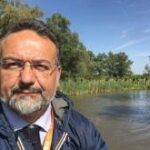
Professor of Landscape Architecture at the Department of Architecture of the University of Palermo.
Manfredi LEONE, has a Ph.D. and is Professor of Landscape Architecture at the Department of Architecture of the University of Palermo. He is Director of LandLab PA, research group and community that developes landscape design based in Sicily.
Landscaper and architectural designer, he is Vice-president at the Sicily Section of the Italian Landscape Architects Association, AIAPP. He is Founder and Board member of I-ASLA, Italian Academic Society of Landscape Architecture.
He is one of the authors of the Parco Uditore in Palermo, has to his credit numerous interventions on landscape and the built envinronment and participations in urban planning designs. He is author of several publications and has been Visiting Professor in the USA, Australia, Spain, Argentina. At the University of Palermo he is director of the Laboratory of Landscape Architecture and he teaches also Architectural Design.
Board Member of the Erasmus Plus European Research Network for Sustainable Management of Cultural La
Manfredi LEONE, has a Ph.D. and is Professor of Landscape Architecture at the Department of Architecture of the University of Palermo. He is Director of LandLab PA, research group and community that developes landscape design based in Sicily.
Landscaper and architectural designer, he is Vice-president at the Sicily Section of the Italian Landscape Architects Association, AIAPP. He is Founder and Board member of I-ASLA, Italian Academic Society of Landscape Architecture.
He is one of the authors of the Parco Uditore in Palermo, has to his credit numerous interventions on landscape and the built envinronment and participations in urban planning designs. He is author of several publications and has been Visiting Professor in the USA, Australia, Spain, Argentina. At the University of Palermo he is director of the Laboratory of Landscape Architecture and he teaches also Architectural Design.
Board Member of the Erasmus Plus European Research Network for Sustainable Management of Cultural Landscapes. Along many years he has been developing research topics on various landscape themes, with a focus on the theme of coastal landscape, landscape of defenses, hydraulic landscape and public space. Most of his works are focused on low cost and low impact technologies. He won national prizes for landscape architecture and architectural design projects. He has been Team Leader during the first ChinaLab018 at TURENSCAPE Academy in Xixinan, Anhui Province, China and Team Leader during second edition of ArnoLab019 in Florence.
This content is avaiable only in this archive.

Architect
Sandra Piesik is an award-winning architect, author and researcher specialising in technology development and transfer as well as the implementation of global sustainable legislation. She is the founder of 3 ideas Ltd and a Visiting Professor at the UCL Global Institute for Prosperity, initiator of several RD&D groups and consortia including HABITAT Coalition.
She is collaborating with the Paris Committee on Capacity Building of The United Nations Framework Convention on Climate Change (UNFCCC), CTCN, UNCCD, UN-HABITAT on The Guiding Principles for Urban-Rural Linkages for Advancing Integrated Territorial Development, The Global Centre on Adaptation (GCA) and the European Space Agency.
Her published work includes Arish: Palm-Leaf Architecture (Thames & Hudson 2012) and she is the general editor of the encyclopaedia, HABITAT: Vernacular Architecture for a Changing Planet (Thames & Hudson, Abrams Books, Flammarion, Editions Detail and Blume, 2017).
This encyclopaedia
Sandra Piesik is an award-winning architect, author and researcher specialising in technology development and transfer as well as the implementation of global sustainable legislation. She is the founder of 3 ideas Ltd and a Visiting Professor at the UCL Global Institute for Prosperity, initiator of several RD&D groups and consortia including HABITAT Coalition.
She is collaborating with the Paris Committee on Capacity Building of The United Nations Framework Convention on Climate Change (UNFCCC), CTCN, UNCCD, UN-HABITAT on The Guiding Principles for Urban-Rural Linkages for Advancing Integrated Territorial Development, The Global Centre on Adaptation (GCA) and the European Space Agency.
Her published work includes Arish: Palm-Leaf Architecture (Thames & Hudson 2012) and she is the general editor of the encyclopaedia, HABITAT: Vernacular Architecture for a Changing Planet (Thames & Hudson, Abrams Books, Flammarion, Editions Detail and Blume, 2017).
This encyclopaedia is the first contemporary global review of vernacular architecture carried out in the past twenty years. The culmination of years of specialist research, it gathers together an international team of more than one hundred and forty leading experts from fifty counties across a diverse range of disciplines to examine what the traditions of vernacular architecture, and its regional craftspeople around the world, can teach us about creating a more sustainable future.
This content is avaiable only in this archive.

Adjunct Professor at Auburn University School of Architecture Rural Studio
Elena Barthel is graduated in architecture (University of Florence 2000), member of the Institute of Architects of Florence (2001) and PhD at the Department of Urban Planning (University of Florence 2010).
She taught Urban design thesis studio (Planning Department, Florence School of Architecture 2001-8) and Architecture Design Studio at the Architectural Association in London (2006-7). In 2008, for the Architectural Association, she co-designed the ‘Hooke Park Design & Make Strategic Plan’: a ‘on the ground’ program, developed in consultation with West Dorset local Perish and Planning Authorities. The project focused on the ethical, social, environmental, and economic impact of the design and built program on both, the London based AA institution, and the local rural community in Hooke. Since 2012, the Design & Make program has been teaching students from all over the world.
She is currently Adjunct Professor at Auburn University School of Architecture Rural Studio: a
Elena Barthel is graduated in architecture (University of Florence 2000), member of the Institute of Architects of Florence (2001) and PhD at the Department of Urban Planning (University of Florence 2010).
She taught Urban design thesis studio (Planning Department, Florence School of Architecture 2001-8) and Architecture Design Studio at the Architectural Association in London (2006-7). In 2008, for the Architectural Association, she co-designed the ‘Hooke Park Design & Make Strategic Plan’: a ‘on the ground’ program, developed in consultation with West Dorset local Perish and Planning Authorities. The project focused on the ethical, social, environmental, and economic impact of the design and built program on both, the London based AA institution, and the local rural community in Hooke. Since 2012, the Design & Make program has been teaching students from all over the world.
She is currently Adjunct Professor at Auburn University School of Architecture Rural Studio: a community based, design and build program located in west Alabama where she has been working full time as Assistant professor from 2008 until 2016.
During this period, She run the Rural Studio Farm: a prototypical homestead as a laboratory for organic farming and passive architecture strategies.
Since 2008, she has been lecturing in architecture programs and different venues from Tel Aviv Eco Week, Quito Biennale, Rhode Island School of Design, University of Alabama, Bergen and Amsterdam School of Architecture, Helsinki Art Museum, Turin Polytechnic, University of Roma 3, Trento University of Engineering Milan Polytechnic, Florence School of Architecture, Syracuse and California State University.
In 2014 she co-authored ‘Rural Studio at twenty: Designing and Building in Hale County, Alabama, published by Princeton Architectural Press. In 2018 and 2019 she published the articles ‘Thinnings’ (Harvard Magazine 04/2018) and ‘Taking off’ (Lotus 03/19).
In 2016 with Rural Studio, she co-designed “Forum” for the exhibit “Architecture as art”, at the Milan Triennale and the ‘Theatre of the useful’ for the XV Venice Biennale “Report from the front”, both installations produced zero waste emphasizing on a responsible everyday use of resources.
In 2017, in collaboration with Andrew Freear and Studio Tempi, she won the Jury Prize for the project ‘1 City, 1 Landscape: Re-Call’ in San Giovanni Valdarno.
With the Comunità di Base delle Piagge, and the comune di Fiesole she is currently working on the design of participated community public spaces.
In 2018 she was part of the SIAT YOUNG 2018 competition jury in Turin.
This content is avaiable only in this archive.

Architect
Director and Principal Landscape Architect with Dermot Foley Landscape Architects (DFLA), with over 20 years experience. He is a horticulturalist and landscape architect, having trained at the National Botanic Gardens before studying landscape architecture. He established the practice in 2001 and was awarded Europe 40-Under-40 in 2010. With multiple awards for landscape design, landscape research and landscape conservation his clients include Kennedy Wilson, Castlethorn Construction, Laing O’Rourke, Park Developments, Bennett Construction, SIAC, CIE, Dublin City Council, Cork County Council, NUI Maynooth, HSE, Glanbia, English Partnerships, London School of Economics and Kingston University. He has experience of projects with external works budgets of up to €11m and has completed public realm projects with external works budgets of up to €2.5m. Dermot is an Assistant Professor at University College Dublin (UCD) and lectures internationally. He initiated the EU FP7-funded (€6.7m
Director and Principal Landscape Architect with Dermot Foley Landscape Architects (DFLA), with over 20 years experience. He is a horticulturalist and landscape architect, having trained at the National Botanic Gardens before studying landscape architecture. He established the practice in 2001 and was awarded Europe 40-Under-40 in 2010. With multiple awards for landscape design, landscape research and landscape conservation his clients include Kennedy Wilson, Castlethorn Construction, Laing O’Rourke, Park Developments, Bennett Construction, SIAC, CIE, Dublin City Council, Cork County Council, NUI Maynooth, HSE, Glanbia, English Partnerships, London School of Economics and Kingston University. He has experience of projects with external works budgets of up to €11m and has completed public realm projects with external works budgets of up to €2.5m. Dermot is an Assistant Professor at University College Dublin (UCD) and lectures internationally. He initiated the EU FP7-funded (€6.7m) research project on Resilient Cities in 2011, titled TURAS, with 25 EU research partners. He edited the practice book Artifice, which is the first comprehensive publication on contemporary Irish landscape architecture. His researched includes Urban Resilience, Sustainable Drainage Systems, Historic Studies and Venturous Practice. In 2016 he was an ‘Adapt-r’ Scholar with the Royal Melbourne Institute of Technology. Current projects include the Curragh Racecourse, Bridgefoot Street Public Park, the Paul Marshall Building at LSE and Kingston University.
This content is avaiable only in this archive.
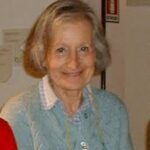
Full professor in History of Architecture
Professor in History of Architecture, Architecture Faculty , Florence,Italy; she teaches History of Architecture and Country at the Florence Letter and Philosophy Faculty.
Studies mainly in the history of the city and the country, particularly referred to the Middle Ages and Modern Times (especially Tuscan and Florentine Areas).
Apart from scientific studies, related pubblications and participation in national and international metings, since 1988 an intense collaboration as been carried ont with regional and municipal land authorities towards the realization of museum systems and structures and the protection of the cultural heritage.
Professor in History of Architecture, Architecture Faculty , Florence,Italy; she teaches History of Architecture and Country at the Florence Letter and Philosophy Faculty.
Studies mainly in the history of the city and the country, particularly referred to the Middle Ages and Modern Times (especially Tuscan and Florentine Areas).
Apart from scientific studies, related pubblications and participation in national and international metings, since 1988 an intense collaboration as been carried ont with regional and municipal land authorities towards the realization of museum systems and structures and the protection of the cultural heritage.
This content is avaiable only in this archive.

Architect
Elisabetta Bianchessi is a licensed architect trained at Faculdade de Arquitectura Lisboa – Escuela Tecnica Superior de Arquitectura de Madrid – Politecnico di Milano (with honneurs) She was awarded with a PhD in Landscape Design at Escola Tecnica Superior d’Arquitectura de Barcelona – Escuela Tecnica Superior de Arquitectura de Madrid (with honneurs) She has been teaching Landscape Design at Politecnico di Milano and Accademia Belle Arti Brescia (2003-2013), and She is Ideator and Founder of the Paesaggi Straordinari – Master in Landscape Design and Public Art, at Politecnico di Milano and NABA Nuova Accademia Belle Arti Milano (2007-2013). Since 2013, She is Scientific Director of Summer School – Bergamo Landscape and Garden Institute and Visiting Professor at the Master in World Natural Heritage Management Unesco – STEP scuola del paesaggio e del territorio Trento. In 2008 she ideated and founded T12-Lab Action-Research Agency for Social Design and Public Space. Ide
Elisabetta Bianchessi is a licensed architect trained at Faculdade de Arquitectura Lisboa – Escuela Tecnica Superior de Arquitectura de Madrid – Politecnico di Milano (with honneurs) She was awarded with a PhD in Landscape Design at Escola Tecnica Superior d’Arquitectura de Barcelona – Escuela Tecnica Superior de Arquitectura de Madrid (with honneurs) She has been teaching Landscape Design at Politecnico di Milano and Accademia Belle Arti Brescia (2003-2013), and She is Ideator and Founder of the Paesaggi Straordinari – Master in Landscape Design and Public Art, at Politecnico di Milano and NABA Nuova Accademia Belle Arti Milano (2007-2013). Since 2013, She is Scientific Director of Summer School – Bergamo Landscape and Garden Institute and Visiting Professor at the Master in World Natural Heritage Management Unesco – STEP scuola del paesaggio e del territorio Trento. In 2008 she ideated and founded T12-Lab Action-Research Agency for Social Design and Public Space. Ideator and President of Verdi Acque (since 2013), no profit association which mission is sustaining the living conditions of river habitats and their communities. She also serves as Honorary Fellow of Liveinslums ngo (since 2011), being scientific director of operations in their projects about sustainable agricultural habitats in urban megalopolis. She collaborates with the Landscape Study Center – Verbania Landscape Museum.
This content is avaiable only in this archive.
Progetto RIVA
L’Associazione LWCircus, in collaborazione con la Direzione Artistica delle Murate, nell’ambito del progetto RIVA, palinsesto che promuove ricerche alternative commissionando interventi artistici incentrati sul fiume Arno, ha presentato il secondo appuntamento primaveriale della serie di seminari e Open Talks ILARKS, ideati per ampliare e promuovere il dibattito all’interno della disciplina sull’utilizzo di pratiche performative e linguaggi multimediali nella progettazione, valorizzazione e attivazione dei paesaggi culturali contemporanei, coinvolgendo architetti, paesaggisti, artisti e designer, attivisti, curatori antropologi ed editori, chiamati a dare il loro contributo in merito.
L’Associazione LWCircus, in collaborazione con la Direzione Artistica delle Murate, nell’ambito del progetto RIVA, palinsesto che promuove ricerche alternative commissionando interventi artistici incentrati sul fiume Arno, ha presentato il secondo appuntamento primaveriale della serie di seminari e Open Talks ILARKS, ideati per ampliare e promuovere il dibattito all’interno della disciplina sull’utilizzo di pratiche performative e linguaggi multimediali nella progettazione, valorizzazione e attivazione dei paesaggi culturali contemporanei, coinvolgendo architetti, paesaggisti, artisti e designer, attivisti, curatori antropologi ed editori, chiamati a dare il loro contributo in merito.
This content is avaiable only in this archive.
Promoted by the MUS.E Association under the artistic direction of Valentina Gensini
In 2019, the RIVA Project further explored its international focus through lectures and workshops. Of particular importance was the lecture held at MAD by Michelangelo Pistoletto, in partnership with the Academy of Fine Arts of Florence, as well as the conferences curated by LWCircus, and the cycle of encounters curated by Prof. Antonio Capestro, with the collaboration of CISDU and the University of Florence. The constant maintenance of the Terzo Giardino fluvial park continued, likewise its guided visits organised by the Mus.e. Association. The partnership programme with Zhong Art International was intensified and two professors from the Academy of Fine Arts of Sichuan spent a period of residency at Murate Art District. These events strengthened the process to the final goal: a grand pluriannual exhibit initially scheduled for 2020 and then postponed to 2021 due to the restrictions imposed to contrast the Covid-19 pandemic.
In 2019, the RIVA Project further explored its international focus through lectures and workshops. Of particular importance was the lecture held at MAD by Michelangelo Pistoletto, in partnership with the Academy of Fine Arts of Florence, as well as the conferences curated by LWCircus, and the cycle of encounters curated by Prof. Antonio Capestro, with the collaboration of CISDU and the University of Florence. The constant maintenance of the Terzo Giardino fluvial park continued, likewise its guided visits organised by the Mus.e. Association. The partnership programme with Zhong Art International was intensified and two professors from the Academy of Fine Arts of Sichuan spent a period of residency at Murate Art District. These events strengthened the process to the final goal: a grand pluriannual exhibit initially scheduled for 2020 and then postponed to 2021 due to the restrictions imposed to contrast the Covid-19 pandemic.

Architect
Born in Tunisia and raised between Tunisia and Paris, Henri Bava started his studies with a degree in plant biology from Paris-Orsay University. Showing a keen interest in the living world but from different perspectives, he enrolled afterwards in the École Nationale Supérieure du Paysage (ENSP) in Versailles in 1980, following at the same time a stage design course at the Jacques Lecoq École Internationale de Théâtre in Paris. He graduated as DPLG landscape designer in 1984 with Michel Corajoud as supervisor, and worked for one year in his agency in Paris. In 1986, with his current associates, he founded Agence Ter. Just three years after obtaining his degree, he returned to the ENSP Versailles as a teacher, in parallel to his professional activities, for a period of ten years. As of 1989, after the departure of Michel Hössler for French Guyana, he headed the Agence Ter office in Paris together with Olivier Philippe. From 1993 to 1997, he combined this with work as a State Consu
Born in Tunisia and raised between Tunisia and Paris, Henri Bava started his studies with a degree in plant biology from Paris-Orsay University. Showing a keen interest in the living world but from different perspectives, he enrolled afterwards in the École Nationale Supérieure du Paysage (ENSP) in Versailles in 1980, following at the same time a stage design course at the Jacques Lecoq École Internationale de Théâtre in Paris. He graduated as DPLG landscape designer in 1984 with Michel Corajoud as supervisor, and worked for one year in his agency in Paris. In 1986, with his current associates, he founded Agence Ter. Just three years after obtaining his degree, he returned to the ENSP Versailles as a teacher, in parallel to his professional activities, for a period of ten years. As of 1989, after the departure of Michel Hössler for French Guyana, he headed the Agence Ter office in Paris together with Olivier Philippe. From 1993 to 1997, he combined this with work as a State Consultant Landscape Designer for the DDE of the Eure County. Henri Bava was elected president of the French Landscape Federation, a position held between 1996 and 1998.
It was at this time that he initiated his work in Germany. He lead the execution of the Aqua Magica Park project near Hanover and was appointed at the same time, under a European recruitment process, as full professor and director of the Landscape department of the school of architecture at the Karlsruhe Institute of Technology (KIT), where he is still teaching today. In 2000, he created an Agence Ter office in Karlsruhe, from where he directed large cross-border territory development projects, rehabilitation projects for derelict industrial sites or the realisation of major public venues, such as in Duisburg. Six years later he was elected a member of the Berlin Academy of Arts. After returning to Agence Ter Paris in 2007, he was elected president of the governing board of the École Nationale de la Nature et du Paysage, Blois (ENSNP) in 2010. That same year, Henri Bava was invited to the Harvard University Graduate School of Design by Charles Waldheim, director of the landscape department, where he often teaches in the frame of design studios until today. In 2014, following the winning of the competition for Barcelona’s “Plaza Glories Catalanes”, a Spanish office was set up. In 2016, Henri Bava led the winning team for the renewal of Pershing Square, and has opened the first American office of Agence Ter, in Downtown Los Angeles.
This content is avaiable only in this archive.

Architect
Neville Mars is the principal of MARS Architects in Shanghai, a sustainable planning and architecture studio with over thirteen years of experience in Asia. MARS Architects have won national and international architecture competitions, including the winning entry for the national image museum in Chengdu, and the winning entry for a brand headquarters in Sofia, currently under construction. MARS has developed over a dozen integrated planning projects across Asia, including the Sino-Dutch Ecocity in Shenzhen, currently under construction, the Beijing 798 Art District, Vision United Mumbai, and the integral master plan for Caofeidian Ecocity. Recently MARS has been invited by UN HABITAT to collaborate on the planning of Tacloban in the Philippines, the city ravaged by typhoon Haiyan. Neville Mars is also the director of the Dynamic City Foundation (DCF), a not-for-profit research platform investigating rapid urbanization in Asia. Starting his career at OMA, a distinct research-driven
Neville Mars is the principal of MARS Architects in Shanghai, a sustainable planning and architecture studio with over thirteen years of experience in Asia. MARS Architects have won national and international architecture competitions, including the winning entry for the national image museum in Chengdu, and the winning entry for a brand headquarters in Sofia, currently under construction. MARS has developed over a dozen integrated planning projects across Asia, including the Sino-Dutch Ecocity in Shenzhen, currently under construction, the Beijing 798 Art District, Vision United Mumbai, and the integral master plan for Caofeidian Ecocity. Recently MARS has been invited by UN HABITAT to collaborate on the planning of Tacloban in the Philippines, the city ravaged by typhoon Haiyan. Neville Mars is also the director of the Dynamic City Foundation (DCF), a not-for-profit research platform investigating rapid urbanization in Asia. Starting his career at OMA, a distinct research-driven approach has become the trademark of the DCF, spawning collaborations with a range of educational, commercial, artistic and research institutes worldwide. Working across scales and disciplines DCF produces projects that bridge the traditional gap between theory and practice, art installations and technology, research and design.
Mars is a lecturer at the China Academy of Art and has a PhD from RMIT, focused on urban theory. He is a member of the BMW Guggenheim Lab, and fellow presenter at the TEDglobal_INK conference. Mars is the author of the book The Chinese Dream – a society under construction (010 Publishers, N. Mars, A. Hornsby, Rotterdam 2008). The 800 page tome proved to be a prophetic analysis of the correlation between city building and society building in China, inspiring the theme of China’s 12th FYP. Winter 2016, Mars published his second book “Manifesto of Mistakes – urban solutions for the new world”, this ecocity design manual rethinks the fundamental principles of the urban discipline, to arrive at a comprehensive strategy for process-driven integrated urban planning.
This content is avaiable only in this archive.

Architect, designer
Walter Hood is the Creative Director and Founder of Hood Design Studio in Oakland, CA. His works often explore elements of race, identity, social justice, and environmental design. He is also a professor at the University of California, Berkeley and lectures on professional and theoretical projects nationally and internationally. Hood Design Studio is tripartite practice, working across art + fabrication, design + landscape, and research + urbanism. The resulting urban spaces and their objects act as public sculpture, creating new apertures through which to see the surrounding emergent beauty, strangeness, and idiosyncrasies. The Studio’s award winning work has been featured in publications including Dwell, The Wall Street Journal, The New York Times, Fast Company, Architectural Digest, Places Journal, and Landscape Architecture Magazine. Walter Hood is also a recipient of the 2017 Academy of Arts and Letters Architecture Award expression and multiple forms of media.
Walter Hood is the Creative Director and Founder of Hood Design Studio in Oakland, CA. His works often explore elements of race, identity, social justice, and environmental design. He is also a professor at the University of California, Berkeley and lectures on professional and theoretical projects nationally and internationally. Hood Design Studio is tripartite practice, working across art + fabrication, design + landscape, and research + urbanism. The resulting urban spaces and their objects act as public sculpture, creating new apertures through which to see the surrounding emergent beauty, strangeness, and idiosyncrasies. The Studio’s award winning work has been featured in publications including Dwell, The Wall Street Journal, The New York Times, Fast Company, Architectural Digest, Places Journal, and Landscape Architecture Magazine. Walter Hood is also a recipient of the 2017 Academy of Arts and Letters Architecture Award expression and multiple forms of media.
This content is avaiable only in this archive.

Video artist
Ila Bêka trained as an architect with a degree from the Università Iuav di Venezia of Venice and the École Nationale Supérieure d’Architecture de Paris-Belleville, where he studied with Aldo Rossi, Manfredo Tafuri, Vittorio Gregotti, Massimo Cacciari, Bernardo Secchi, Ugo La Pietra, Henri Ciriani and Jacques Lucan.
Since 2005 he has been working in collaboration with Louise Lemoine with whom he founded the research and creation platform Bêka & Lemoine. Described by The New York Times as “cult figures in the European architecture world”, Bêka and Lemoine focus their work on experimental new narrative and cinematographic forms in relation to contemporary architecture. Koolhaas Houselife, the first film Bêka co-directed with Lemoine in 2008, has been acclaimed by the international critique as “The architectural cult movie”.
Bêka has been invited to lecture and present his films at many international cultural institutions and prestigious
Ila Bêka trained as an architect with a degree from the Università Iuav di Venezia of Venice and the École Nationale Supérieure d’Architecture de Paris-Belleville, where he studied with Aldo Rossi, Manfredo Tafuri, Vittorio Gregotti, Massimo Cacciari, Bernardo Secchi, Ugo La Pietra, Henri Ciriani and Jacques Lucan.
Since 2005 he has been working in collaboration with Louise Lemoine with whom he founded the research and creation platform Bêka & Lemoine. Described by The New York Times as “cult figures in the European architecture world”, Bêka and Lemoine focus their work on experimental new narrative and cinematographic forms in relation to contemporary architecture. Koolhaas Houselife, the first film Bêka co-directed with Lemoine in 2008, has been acclaimed by the international critique as “The architectural cult movie”.
Bêka has been invited to lecture and present his films at many international cultural institutions and prestigious universities such as Venice Biennale (2008, 2010, 2014), MoMA (New-York), Metropolitan Museum of Art (New-York), Centre Pompidou (Paris), Palais de Tokyo (Paris), Barbican Art Gallery (London), Canadian Centre for Architecture (Montréal), NAi (Rotterdam, NL), MAXXI (Rome), SALT (Istanbul), Harvard GSD, Architectural Association School of Architecture (London), Mextropoli (Mexico).
According to ArchDaily, one of the most visited architecture websites worldwide, their films “alter the face of architectural criticism”.
Ila Bêka is currently teaching at AA School, Architectural Association School of Architecture in London.
Bêka & Lemoine’s complete work (16 films) was acquired in 2016 by MoMA, Museum of Modern Art in New York, and is now part of its permanent collection. The acquisition of a complete work by MoMA, Museum of Modern Art is an extremely rare event for a living artist.
This content is avaiable only in this archive.

Video artist
Lemoine lives and works between France and Italy. Since 2005 she has been working in collaboration with her husband Ila Bêka with whom she founded the research and creation platform Bêka&Partners.
Presented by The New York Times as “cult figures in the European architecture world”, Lemoine and Bêka mainly focus their research on experimenting new narrative and cinematographic forms in relation to contemporary architecture.
Koolhaas Houselife, the first film she co-directed with Bêka in 2008, has been acclaimed by the international critique as “the architectural cult movie”. They self-financed the film in order to assure creative freedom.
Following the success of Koolhaus Houselife, Bêka and Lemoine shot the four other films that would make up their Living Architectures series. This series, which comprises Koolhaus Houselife; Pomerol, Herzog & de Meuron; Xmas Meier; Gehry’s Vertigo; and Inside Piano, follows the mundane realities of mai
Lemoine lives and works between France and Italy. Since 2005 she has been working in collaboration with her husband Ila Bêka with whom she founded the research and creation platform Bêka&Partners.
Presented by The New York Times as “cult figures in the European architecture world”, Lemoine and Bêka mainly focus their research on experimenting new narrative and cinematographic forms in relation to contemporary architecture.
Koolhaas Houselife, the first film she co-directed with Bêka in 2008, has been acclaimed by the international critique as “the architectural cult movie”. They self-financed the film in order to assure creative freedom.
Following the success of Koolhaus Houselife, Bêka and Lemoine shot the four other films that would make up their Living Architectures series. This series, which comprises Koolhaus Houselife; Pomerol, Herzog & de Meuron; Xmas Meier; Gehry’s Vertigo; and Inside Piano, follows the mundane realities of maintaining buildings by renowned architects, including Rem Koolhaas (the Bordeaux house), Frank Gehry (the Bilbao Guggenheim), and Auguste Perret.
Her films have been selected and awarded in some important international film festivals such as CPH:DOX, Chicago International Film Festival, DocAviv, Torino Film Festival, FIFA, etc.
She has been invited to lecture and present her films in many international cultural institutions and prestigious universities such as Venice Biennale (2008, 2010, 2014), MoMA (New York), Metropolitan Museum of Art (New-York), Centre Pompidou (Paris), Palais de Tokyo (Paris), Barbican Art Gallery (London), Canadian Centre for Architecture (Montréal), NAi (Rotterdam, NL), MAXXI (Rome), Harvard GSD, Architectural Association School of Architecture (London), Mextropoli (Mexico).
Her films are part of important art collections, the CNAP have acquired in 2014 a copy of Koolhaas Houselife and in 2015 a copy of the video installation La Maddalena for the French national collections. The video work Spiriti has been commissioned by Fondazione Prada for their private collection.
In 2016 Ila Bêka and Louise Lemoine’s complete work (16 films) has been acquired by MoMA, Museum of Modern Art in New York.
This content is avaiable only in this archive.

Architect
Anton James is one of three directors of the Sydney based landscape architectural practice, James Mather Delaney Design and Professor of landscape Architecture at RMIT. JMD Design seeks a creative synthesis between numerous concerns across the disciplines of landscape architecture, engineering, visual arts, horticulture and ecology. The resultant works demonstrate a dynamic and sophisticated response firmly grounded in a close attention to the existing site character and materiality specificity of each site.
Anton, who trained as a landscape architect and visual artist, has over a period of 20 years designed projects in Australia, Europe and the USA. His work continues to focus on design as a means to explore a site’s spatial, environmental and material tension for their potential to enrich the urban experience. He has recently received his Doctor of Philosophy from the Royal Melbourne Institute of Technology, School of Architecture and Design, and been appointed Professor of lands
Anton James is one of three directors of the Sydney based landscape architectural practice, James Mather Delaney Design and Professor of landscape Architecture at RMIT. JMD Design seeks a creative synthesis between numerous concerns across the disciplines of landscape architecture, engineering, visual arts, horticulture and ecology. The resultant works demonstrate a dynamic and sophisticated response firmly grounded in a close attention to the existing site character and materiality specificity of each site.
Anton, who trained as a landscape architect and visual artist, has over a period of 20 years designed projects in Australia, Europe and the USA. His work continues to focus on design as a means to explore a site’s spatial, environmental and material tension for their potential to enrich the urban experience. He has recently received his Doctor of Philosophy from the Royal Melbourne Institute of Technology, School of Architecture and Design, and been appointed Professor of landscape Architecture at RMIT.
Anton has won numerous awards, nationally and internationally for his competition entries and built projects.
This content is avaiable only in this archive.

Architect
Claudia Pasquero is an architect, curator, author and educator; her work and research operates at the intersection of biology, computation and design. She is founder and co-director of ecoLogicStudio in London, Lecturer and director of the Urban Morphogenesis Lab at the Bartlett UCL, Professor of Landscape Architecture and founder of the Synthetic Landscape Lab at Innsbruck University.
Claudia has been Head Curator of the Tallinn Architectural Biennale 2017, and she has been nominated in the WIRED smart list in the same year.
She is co-author of “Systemic Architecture – Operating manual for the self-organizing city” published by Routledge in 2012.
Her work has been published and exhibited internationally: at the FRAC Centre in Orléans, the Venice Architectural Biennale, ZKM Karlsruhe and the MilanoExpo2015 among others. ecoLogicStudio has in recent year completed a series of photosynthetic architectures, such as, the BioTechHut Pavilion for Expo Astana 2017, HORTUS
Claudia Pasquero is an architect, curator, author and educator; her work and research operates at the intersection of biology, computation and design. She is founder and co-director of ecoLogicStudio in London, Lecturer and director of the Urban Morphogenesis Lab at the Bartlett UCL, Professor of Landscape Architecture and founder of the Synthetic Landscape Lab at Innsbruck University.
Claudia has been Head Curator of the Tallinn Architectural Biennale 2017, and she has been nominated in the WIRED smart list in the same year.
She is co-author of “Systemic Architecture – Operating manual for the self-organizing city” published by Routledge in 2012.
Her work has been published and exhibited internationally: at the FRAC Centre in Orléans, the Venice Architectural Biennale, ZKM Karlsruhe and the MilanoExpo2015 among others. ecoLogicStudio has in recent year completed a series of photosynthetic architectures, such as, the BioTechHut Pavilion for Expo Astana 2017, HORTUS Astana 2017, Urban Algae Folly Aarhus 2017, PhotoSynthEtica Dublin 2019, HORTUS XL 2020 for the Center Pompidou in Paris, PhotosSynthEtica Helsinki 2020 upon others.
This content is avaiable only in this archive.

Architect
Marco Poletto is an architect, educator and innovator based in London.
He is co-founder and Director of the architectural practice ecoLogicStudio and the design innovation venture PhotoSynthetica, focussed on developing architectural solutions to fight Climate Change.
In the past 10 years ecoLogicStudio has designed and built several living installations and architectures, demonstrating how microorganisms such as algae can become part of the bio-city of the future.
Marco holds a PhD Degree from RMIT University, Melbourne.
His thesis on the “Urbansphere” argues that the increased spatial integration of non-human systems within architecture is crucial to evolve higher forms of urban ecological intelligence.
He is also co-author of “Systemic Architecture” a book published by Routledge in 2012.
Marco has been Unit Master at the Architectural Association in London, Visiting critic at Cornell University and Research Cluster leader at The Bartlett, UCL.
He currently Lectures at the U
Marco Poletto is an architect, educator and innovator based in London.
He is co-founder and Director of the architectural practice ecoLogicStudio and the design innovation venture PhotoSynthetica, focussed on developing architectural solutions to fight Climate Change.
In the past 10 years ecoLogicStudio has designed and built several living installations and architectures, demonstrating how microorganisms such as algae can become part of the bio-city of the future.
Marco holds a PhD Degree from RMIT University, Melbourne.
His thesis on the “Urbansphere” argues that the increased spatial integration of non-human systems within architecture is crucial to evolve higher forms of urban ecological intelligence.
He is also co-author of “Systemic Architecture” a book published by Routledge in 2012.
Marco has been Unit Master at the Architectural Association in London, Visiting critic at Cornell University and Research Cluster leader at The Bartlett, UCL.
He currently Lectures at the University of Innsbruck and the IAAC in Barcelona.
This content is avaiable only in this archive.
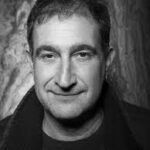
Architect
Francesco Careri (1966) is architect and Associate Professor at the Dipartimento di Architettura of the University of Roma Tre. Since 1995 he is a founding member of the Stalker/Osservatorio Nomade urban art workshop. He invented the cours of “civic art” a peripatetic laboratory founded in the walking exploration of the neglected zones of the city and actually he is the Director of the Master Studi del Territorio / Environmental Humanities. He is working actually with the LAC Laboratory of Civic Art explorig the multicultural possibilities of Roma inclusion in the housing rights movement. He’s main publications are the books Constant. New Babylon, una città nomade, Testo & Immagine, Torino 2001; and Walkscapes. Walking as an aesthetic practice, Editorial Gustavo Gili, Barcellona 2002, Einaudi Torino, 2006.
Stalker Is a collective subject, found in 1995, that engages research and actions within the landscape with particular attention to the areas around the city’s marg
Francesco Careri (1966) is architect and Associate Professor at the Dipartimento di Architettura of the University of Roma Tre. Since 1995 he is a founding member of the Stalker/Osservatorio Nomade urban art workshop. He invented the cours of “civic art” a peripatetic laboratory founded in the walking exploration of the neglected zones of the city and actually he is the Director of the Master Studi del Territorio / Environmental Humanities. He is working actually with the LAC Laboratory of Civic Art explorig the multicultural possibilities of Roma inclusion in the housing rights movement. He’s main publications are the books Constant. New Babylon, una città nomade, Testo & Immagine, Torino 2001; and Walkscapes. Walking as an aesthetic practice, Editorial Gustavo Gili, Barcellona 2002, Einaudi Torino, 2006.
Stalker Is a collective subject, found in 1995, that engages research and actions within the landscape with particular attention to the areas around the city’s margins and forgotten urban space, and abandoned areas or regions under transformation that are referred to here as “Actual Territories.” In may 1999, Stalker, with the Kurdish community of Rome, occupy the building of the ex-veterinarian in Campo Boario (ex slaughter house), naming it “Ararat”, in order to experiment a new shape of contemporary public-space, based on the acceptance and hospitality. Since 2002 Stalker promotes a is an interdisciplinary research network named Osservatorio Nomade. A net shaped each time around a research and action site. Just like it happened for G.R.A Geografie dell’Oltrecittà (2009), Suilettidelfiume (2007), Campagnaromana (2006) and Immaginare Corviale (2003 – 2005) in Rome. Along the via Egnatia (2003 – 2004) from Rome to Istanbul, across the Roma world from Rome to the ex Yugoslavia, with Campus Rom (2008).
LAC – Laboratorio Arti Civiche (LAC) is an interdisciplinary research group founded in 2011, which aims to interact creatively with the citizens through action research and projects, looking for a collective and shared transformation of the built environment. Starting from many experiences led by Stalker, Laboratorio Arti Civiche has lately been involved in studies and projects on informal settlements and squat-occupied spaces in Rome; other projects focused on inclusive dwelling and housing emergency, possibilities of self-construction, re-creation and reappropriation of public spaces. A particular focus has been on the social and spatial exclusion of Roma people and the redefinition of their right to the city.
This content is avaiable only in this archive.

Curator, anthropologist
He has been the Artistic Director of the Macro Museum of Contemporary Art in Rome. Creator and curator of the MAAM Museum of the Museo dell’Altro e dell’Altrove Metropoliz_città meticcia and of the -1 art gallery of the Casa dell’Architettura of Rome. He founded and directs the diffused DiF Museum of the city of Formello. He has conceived and edited as event manager the Rome Architecture Festival. He was editor and director of «ARIA [rivista d’artisti]. He is currently the (ir) respondabile director of “FART i fogli della Fabbrica dell’ARTe”.
Among the latest publications we report the volumes: Diari urbani (Prospettive edizioni, introduction by Marc Augé), Forza Tutt*. La Barricata dell’arte, Exploit. Come rovesciare il mondo ad arte. D-istrizioni per l’uso (curated with F. Benincasa e A. Facchi), Space Metropoliz. L’era delle migrazioni esoplanetarie (curated with F. Boni), Rome. Nome plurale di città (with F. Benincasa), Il Museo dell’Altro e dell’Altr
He has been the Artistic Director of the Macro Museum of Contemporary Art in Rome. Creator and curator of the MAAM Museum of the Museo dell’Altro e dell’Altrove Metropoliz_città meticcia and of the -1 art gallery of the Casa dell’Architettura of Rome. He founded and directs the diffused DiF Museum of the city of Formello. He has conceived and edited as event manager the Rome Architecture Festival. He was editor and director of «ARIA [rivista d’artisti]. He is currently the (ir) respondabile director of “FART i fogli della Fabbrica dell’ARTe”.
Among the latest publications we report the volumes: Diari urbani (Prospettive edizioni, introduction by Marc Augé), Forza Tutt*. La Barricata dell’arte, Exploit. Come rovesciare il mondo ad arte. D-istrizioni per l’uso (curated with F. Benincasa e A. Facchi), Space Metropoliz. L’era delle migrazioni esoplanetarie (curated with F. Boni), Rome. Nome plurale di città (with F. Benincasa), Il Museo dell’Altro e dell’Altrove di Metropoliz (Boprdeaux editions) and Il museo dovunque (edizioni Inside art). He is also the author of numerous photographic books including: Umani, Urbani & Marziani (Postcart). He has also curated exhibitions and art catalogs and is the author of numerous critical contributions.
The MAAM Museo dell’Altro e dell’Altrove di Metropoliz_città meticcia is the first inhabited museum of the Planet Earth (or rather of the Moon). Son of the film and art gallery Space Metropoliz, the MAAM was founded in 2012 to protect the house of 200 migrants and temporary workers from all over the world. Today it boasts a collection of over 500 works.
This content is avaiable only in this archive.
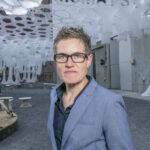
Architect and designer
Jenny E. Sabin is an architectural designer whose work is at the forefront of a new direction for 21st century architectural practice — one that investigates the intersections of architecture and science, and applies insights and theories from biology and mathematics to the design of material structures. Sabin is the Arthur L. and Isabel B. Wiesenberger Professor in Architecture and the Director of Graduate Studies in the Department of Architecture at Cornell University where she established a new advanced research degree in Matter Design Computation. She is principal of Jenny Sabin Studio, an experimental architectural design studio based in Ithaca and Director of the Sabin Design Lab at Cornell AAP, a trans-disciplinary design research lab with specialization in computational design, data visualization and digital fabrication.
In 2006, Sabin co-founded the Sabin+Jones LabStudio, a hybrid research and design unit, together with biologist, Peter Lloyd Jones. Sabin is also a founding
Jenny E. Sabin is an architectural designer whose work is at the forefront of a new direction for 21st century architectural practice — one that investigates the intersections of architecture and science, and applies insights and theories from biology and mathematics to the design of material structures. Sabin is the Arthur L. and Isabel B. Wiesenberger Professor in Architecture and the Director of Graduate Studies in the Department of Architecture at Cornell University where she established a new advanced research degree in Matter Design Computation. She is principal of Jenny Sabin Studio, an experimental architectural design studio based in Ithaca and Director of the Sabin Design Lab at Cornell AAP, a trans-disciplinary design research lab with specialization in computational design, data visualization and digital fabrication.
In 2006, Sabin co-founded the Sabin+Jones LabStudio, a hybrid research and design unit, together with biologist, Peter Lloyd Jones. Sabin is also a founding member of the Nonlinear Systems Organization (NSO), a research group started by Cecil Balmond at PennDesign, where she was Senior Researcher and Director of Research. Sabin’s collaborative research including bioinspired adaptive materials and 3D geometric assemblies has been funded substantially by the National Science Foundation with applied projects commissioned by diverse clients including Nike Inc., Microsoft Research, Autodesk, the Cooper Hewitt Smithsonian Design Museum, MoMA & MoMA PS1, the Centre Pompidou, the American Philosophical Society Museum, the Museum of Craft and Design, the Philadelphia Redevelopment Authority and the Exploratorium.
Sabin holds degrees in ceramics and interdisciplinary visual art from the University of Washington and a master of architecture from the University of Pennsylvania where she was awarded the AIA Henry Adams first prize medal and the Arthur Spayd Brooke gold medal for distinguished work in architectural design, 2005. Sabin was awarded a Pew Fellowship in the Arts 2010 and was named a USA Knight Fellow in Architecture, 1 of 50 artists and designers awarded nationally by US Artists. In 2014, she was awarded the prestigious Architectural League Prize for Young Architects and was named the 2015 national IVY Innovator in design. Recently, Architectural Record’s national Women in Architecture Awards selected her for the 2016 Innovator in design.
She has exhibited nationally and internationally including in the acclaimed 9th ArchiLab titled Naturalizing Architecture at FRAC Centre, Orleans, France and most recently as part of Beauty, the 5th Cooper Hewitt Design Triennial. Recently, her work was on view in the exhibition, Imprimer Le Monde at the Centre Pompidou. Her work has been published extensively including in the NY Times, The Architectural Review, Azure, A+U, Metropolis, Mark Magazine, 306090, American Journal of Pathology, Science and Wired Magazine. She co-authored Meander, Variegating Architecture with Ferda Kolatan, 2010. Her book titled LabStudio: Design Research Between Architecture and Biology co-authored with Peter Lloyd Jones was published in July 2017. Last year, Sabin won the internationally acclaimed MoMA & MoMA PS1 Young Architects Program with her submission, Lumen.
This content is avaiable only in this archive.
Progetto RIVA
Un grande ciclo di conferenze organizzato nella primavera 2018 da LWCircus e MAD Murate Art District, che ha affrontato la progettazione sostenibile nelle città contemporanee partendo da esempi e soluzioni sui fiumi delle grandi aree urbane internazionali dalla progettazione dal bacino della Garonna in Francia ai modelli evolutivi di Shanghai. Al programma di conferenze si è affiancato il workshop ArnoLab018, un laboratorio creativo open air, finalizzato alla realizzazione in loco di installazioni effimere tra arte e paesaggio. Attraverso modalità sperimentali partecipate e operative i protagonisti di ArnoLab018 hanno reinterpretato e assemblato tra loro materiali naturali riciclati attraverso linguaggi artistici e multimediali per creare arredi urbani leggeri, punti di sosta e rifugi temporanei. I materiali di risulta derivanti dalle fluttuazioni del fiume sono stati messi a disposizione dal Consorzio di Bonifica 3 del medio Valdarno e le essenze autoctone sono state fornite
Un grande ciclo di conferenze organizzato nella primavera 2018 da LWCircus e MAD Murate Art District, che ha affrontato la progettazione sostenibile nelle città contemporanee partendo da esempi e soluzioni sui fiumi delle grandi aree urbane internazionali dalla progettazione dal bacino della Garonna in Francia ai modelli evolutivi di Shanghai. Al programma di conferenze si è affiancato il workshop ArnoLab018, un laboratorio creativo open air, finalizzato alla realizzazione in loco di installazioni effimere tra arte e paesaggio. Attraverso modalità sperimentali partecipate e operative i protagonisti di ArnoLab018 hanno reinterpretato e assemblato tra loro materiali naturali riciclati attraverso linguaggi artistici e multimediali per creare arredi urbani leggeri, punti di sosta e rifugi temporanei. I materiali di risulta derivanti dalle fluttuazioni del fiume sono stati messi a disposizione dal Consorzio di Bonifica 3 del medio Valdarno e le essenze autoctone sono state fornite dal raggruppamento Carabinieri Biodiversità reparto di Vallombrosa.
This content is avaiable only in this archive.